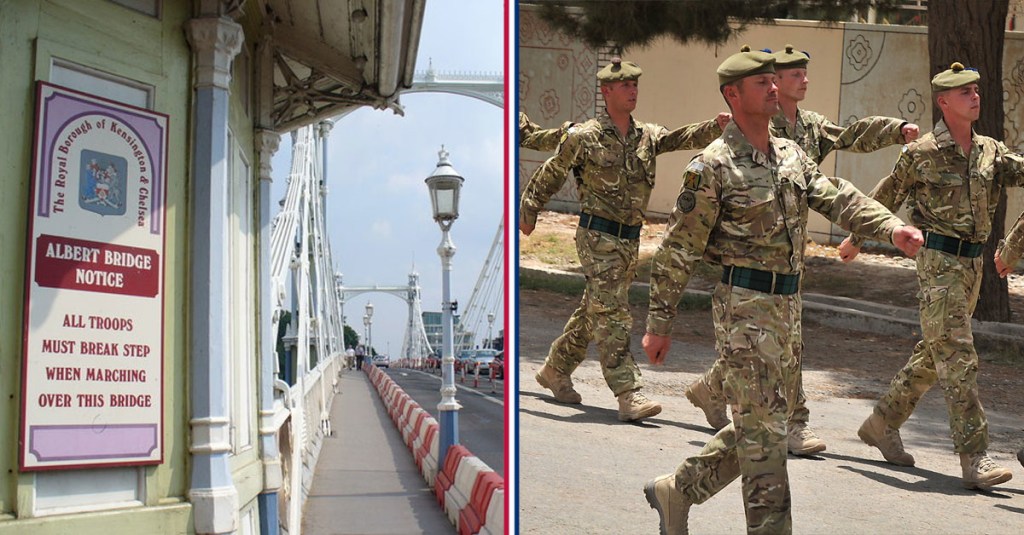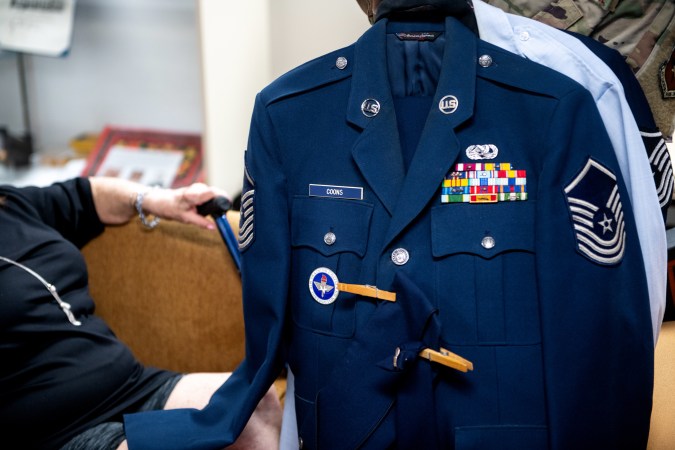The military community is fond of its little myths and urban legends. Some of those repeated tall tales get so shrouded in mystery that, eventually, nobody questions them. On occasion, these unfounded urban legends get so widely accepted that they get written into regulations.
It is because of this phenomenon that the British Army has had a standing order since 1831 to never march in-step on a bridge.
At first glance, the reasoning seems silly. On April 12th, 1831, 74 soldiers were marching across the Broughton Suspension Bridge near Salford, England. The bridge, which was completed in 1826, was one of the first suspension bridges ever built in Europe.

According to the story, the troops’ synchronized march caused the bridge to vibrate at just the right frequency which, in turn, caused it to collapse. Thankfully for all the troops involved, no one was killed and only a few had broken bones, but ever since then, troops are given the command of “Break Step” (the British equivalent of the command “Route Step, March”) when they cross a bridge.
As unbelievable as that might sound, there’s strong scientific evidence to corroborate the story. The conditions need to be exactly precise for it to happen — but it is possible. When the Mythbusters first took on this story, they deemed it false. However, in a rare redaction, the dynamic duo reclassified this myth as “plausible.”
This is because of the power of resonance. Think of an opera singer who can break a wine glass just by singing. Repeated vibrations at an object’s resonant frequency will weaken the structural integrity of a solid object and, in some rare cases, even break it. Fragile objects, like a wine glass or, in this case, a flimsy bridge, are most susceptible.
A resonant frequency can only be hit if several conditions are met: The source must be extremely powerful, the pulses of force must be sent out a very precise frequency, and there must be no other frequencies interfering it. All of those requirements were met when the soldiers marched on the bridge while remaining completely in-step. There’s a one-in-a-billion chance of the soldiers’ march hitting that perfect the frequency, but in this case, it seems they did.
This was, in essence, a much smaller-scale version of what happened on the Tacoma Narrows Bridge in 1940.
The workaround, thankfully, is really simple: If troops aren’t marching at exactly the same frequency, everything’s fine. Bridges built by today’s standards are far more sturdy than the Broughton Bridge, but little oddities like this are fascinating nonetheless.
Read more on WATM:
The best military history books of 2022
Ukraine is getting these 3 armored fighting vehicles from the US, France and Germany










